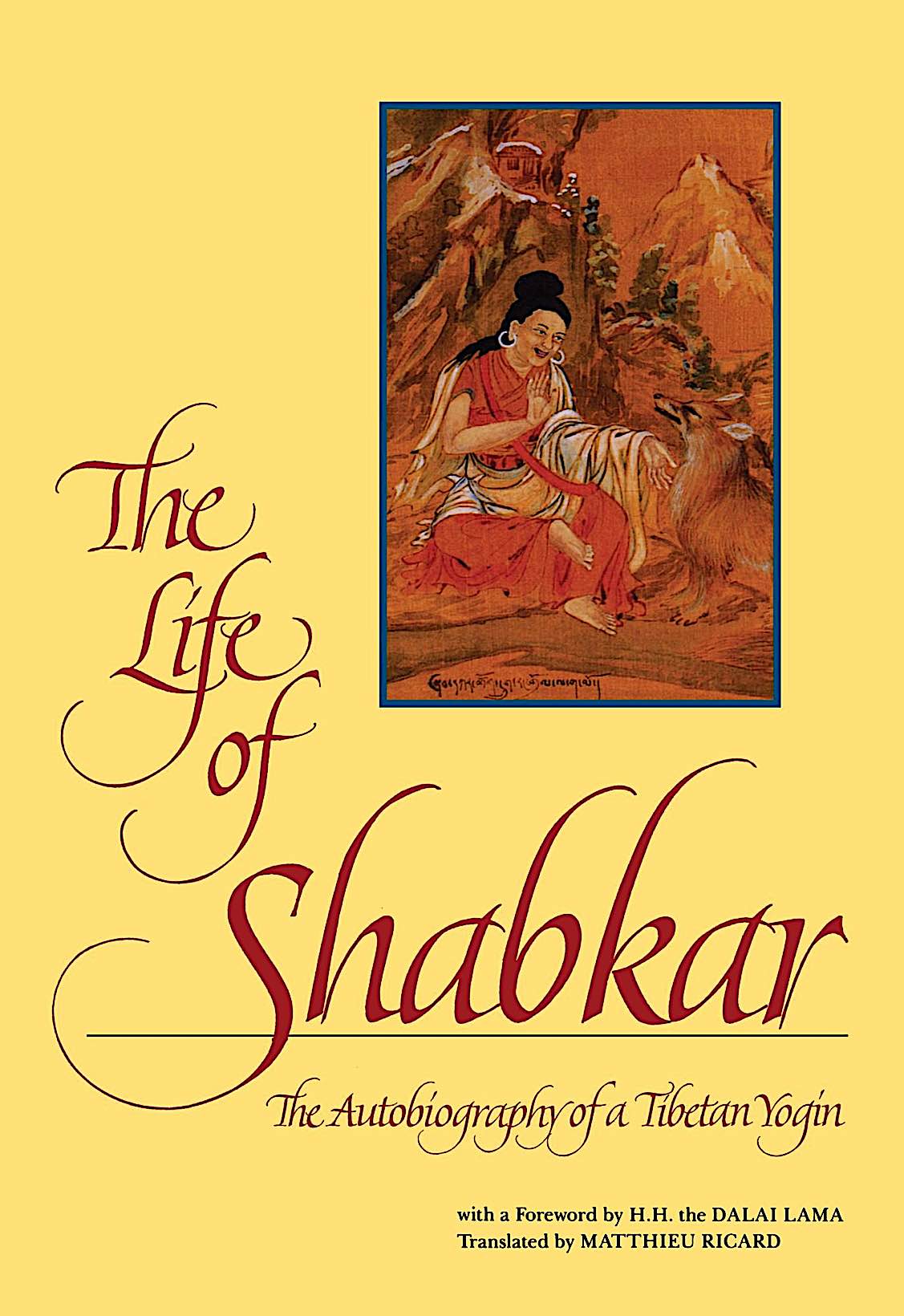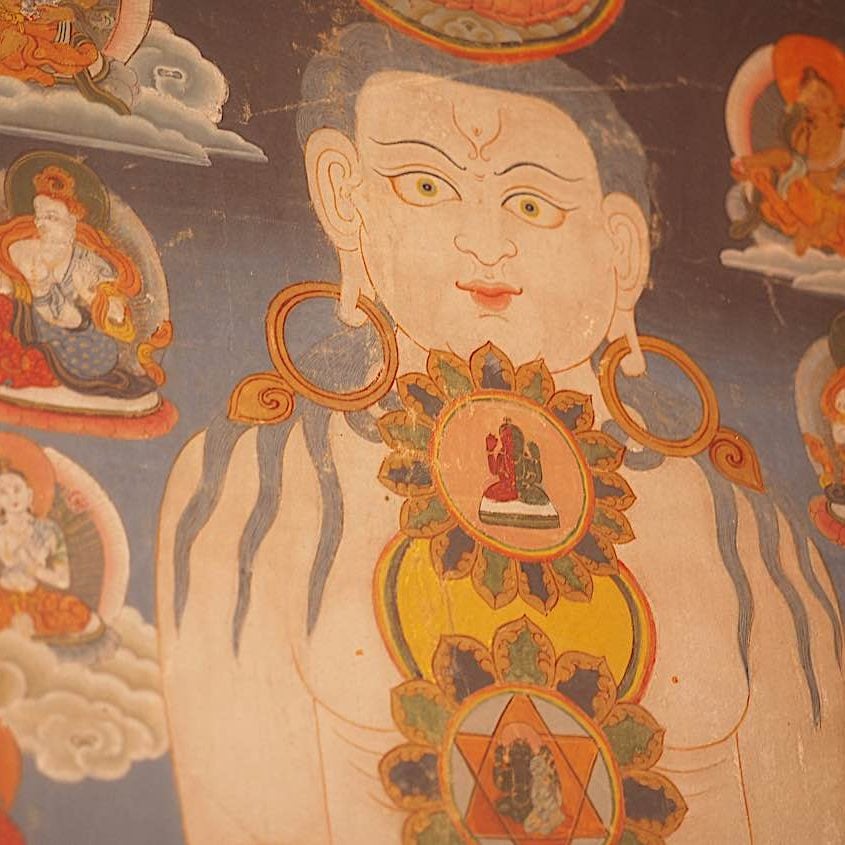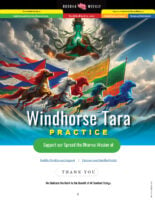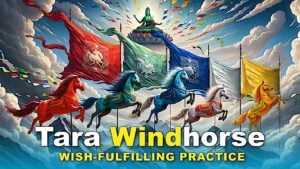Songs of the great Yogi Shabkar: every being is mother; absolute nature is my friend; luminosity is my entertainment; my homeland is the Dharmakaya
The great Yogi Shabkar bridges modern times with the ancient masters, the likes of Milarepa, Marpa, Niropa, Tilopa, and the great Mahasiddhis. Shabkar Tsokdruk Randrol (Tib. ཞབས་དཀར་ཚོགས་དྲུག་རང་གྲོལ་, Wyl. zhabs dkar tshogs drug rang grol), who lived 1781-1851, is more than a “relatively” modern reflection of great Milarepa. Shabkar’s life stands as a shining exemplar of the Path, and his autobiography as a jewel of Dharma and practice advice.
Shabkar, considered an emanation of Milarepa, also taught in songs and much of his life in solitude in the mountains. He is immediately relatable, as he received teachings and initiations from gurus of all schools of Buddhism, although his principal root guru was Chogyal Ngakgi Wangpo — who was not only a Mongolian king, but also the prized disciple of the First Doprupchen. One of his main Yidams was Hayagriva, a practice given by his root guru. [For a story on great Hayagriva, see>>]
Shabkar the scholar poet yogi

The great Shabkar is known as a prolific writer, writing up to a hundred pages a day. Although he is best known for the Flight of the Garuda — a famous teaching on Dzogchen — (Tib. མཁའ་ལྡིང་གཤོག་རླབས་, Khading Shoklap; Wyl. mkha’ lding gshog rlabs), this feature focuses on some wonderful excepts from his autobiography.
Modern, relevant biography and teachings
The English translation of Shabkar’s Life, with a foreward from His Holiness the Dalai Lama, and translated by the Matthieu Ricard, is a wonderful read, and a great learning experience. We learn at the feet of a great Yogi, with teachings given in lyrical songs. His Holiness the Dalai Lama explained Shabkar’s unique appeal:
“Regarded by many as the greatest yogi after Milarepa to gain enlightenment in one lifetime, he also lived the life of a wandering mendicant teaching by means of spiritual songs. Shabkar is particularly celebrated for the absolute purity of his approach to his lama and his personal practice, which freed him from the snare of sectarianism. He is also affectionately remembered for the kindness of his gently teasing humor.”
All beings are mother, homeland is Dharmakaya

The autobiography is full of wisdom and teachings, but instantly relatable are his interactions with local lay people. For instance, when asked by a local follower if he thought of his family, mother and friends, his answer became a concise view of the Path:
Listen, wealthy and devoted lady,
I am a yogin of the luminous awareness that arises of itself.
My homeland is primordial purity, the dharmakaya.
My father—Samantabhadra
My mother—Samantabhadri,
My paternal uncle—Bodhicitta,
My priests—the Three Jewels,
My maternal uncles—deity and guru,
My wife—the lovely shunyata.
My children—meditation experiences, realization, and fine qualities.
My brothers—devotion and pure perception,
My fields—the ten white virtues,
My riches—the inexhaustible seven noble qualities,
My sister—pure samaya,
My neighbor—firm faith,
My cousin—great diligence. [3]
Naturally forgotten

Later, another follower asked if he missed his family, mother and friends:
By the grace of the king of Dharma,
Since I, the renunciate Tsogdruk Rangdrol,
Have made my home again and again
On the safe ground of dharmakaya,
My homeland has been naturally forgotten.
Since I have contemplated again and again
That each being has once been my mother,
Attachment to only one mother
Has been naturally forgotten.
Since I have accumulated again and again
The seven noble riches,
Ordinary food and wealth
Have been naturally forgotten.
Since I have again and again befriended The absolute nature,
The friends from my childhood
Have been naturally forgotten.
Since I have again and again guarded
The samaya oaths,
Deceitfulness
Has been naturally forgotten.
Since I have again and again seen
The display of luminosity,
Worldly entertainments
Have been naturally forgotten.
Since I have again and again tamed
The enemy, the obscuring emotions,
My ordinary enemies
Have been naturally forgotten.
Since I have regarded again and again
All dharmas as illusory,
The eight worldly concerns
Have been naturally forgotten.
Since I have again and again experienced
The samadhi of simplicity,
Complexities have been naturally forgotten.
Since I have wandered in remote places
And in mountain solitudes,
This life has been naturally forgotten. [1]
The metaphor of the thangka
One time Shabkar met a monk who asked him: “You’re good at drawing. Are you a thangka painter, too?” To which he sang this song:
I bow down at the feet of the King of Dharma.
I, the yogin Tsogdruk Rangdrol,
Picked up a white canvas—noble intention
I stretched it on the frame of the four boundless thoughts,
And with pure discipline I primed it.
I applied gesso—changeless faith—
Smoothing it over and over
With an onyx stone—the ten virtues.
First I made the grid—learning.
Then I made a sketch—reflection.
Then I brushed in color—meditation.
Then I painted in the highlights—meditation experiences and realization.
E ma!
Isn’t that good art? [4]
A teaching on the Life of Shabkar Tsokdruk Rangdrol from Venerable Khenpo Tsewang Rinpoche at Padma Samye Ling:
NOTES
[1] Shabkar Tsogdruk Rangdrol. The Life of Shabkar: Autobiography of a Tibetan Yogin (Kindle Locations 5291-5298). Shambhala. Kindle Edition.
[2] Shabkar Tsogdruk Rangdrol. The Life of Shabkar: Autobiography of a Tibetan Yogin (Kindle Locations 137-139). Shambhala. Kindle Edition.
[3] Shabkar Tsogdruk Rangdrol. The Life of Shabkar: Autobiography of a Tibetan Yogin (Kindle Locations 5329-5345). Shambhala. Kindle Edition.
[4] Shabkar Tsogdruk Rangdrol. The Life of Shabkar: Autobiography of a Tibetan Yogin (Kindle Locations 4728-4743). Shambhala. Kindle Edition.
More articles by this author

Guru Rinpoche is ready to answer and grant wishes: “Repeat this prayer continuously” for the granting of wishes

VIDEO: Vajrapani Vajra Armor Mantra: Supreme Protection of Dorje Godrab Vajrakavaca from Padmasambhava
Search
Latest Features
Please support the "Spread the Dharma" mission as one of our heroic Dharma Supporting Members, or with a one-time donation.
Please Help Support the “Spread the Dharma” Mission!

Be a part of the noble mission as a supporting member or a patron, or a volunteer contributor of content.
The power of Dharma to help sentient beings, in part, lies in ensuring access to Buddha’s precious Dharma — the mission of Buddha Weekly. We can’t do it without you!
A non-profit association since 2007, Buddha Weekly published many feature articles, videos, and, podcasts. Please consider supporting the mission to preserve and “Spread the Dharma." Your support as either a patron or a supporting member helps defray the high costs of producing quality Dharma content. Thank you! Learn more here, or become one of our super karma heroes on Patreon.
Lee Kane
Author | Buddha Weekly
Lee Kane is the editor of Buddha Weekly, since 2007. His main focuses as a writer are mindfulness techniques, meditation, Dharma and Sutra commentaries, Buddhist practices, international perspectives and traditions, Vajrayana, Mahayana, Zen. He also covers various events.
Lee also contributes as a writer to various other online magazines and blogs.
















